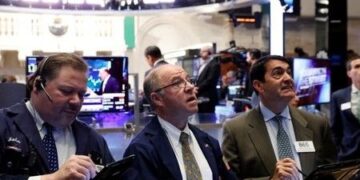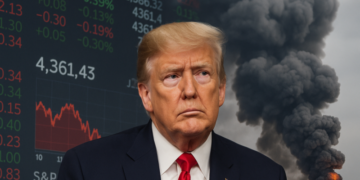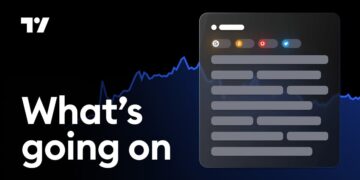Federal Reserve Chairman Jerome Powell probably spoke for a lot of people on Wall Street when he explained to reporters how challenging it was to put together the central bank’s new growth and inflation projections.
“Right now it’s just a forecast in a very foggy time,” Powell said after he and his colleagues trimmed their near-term gross economic growth estimates while nudging their inflation predictions higher. They also made no changes to their guidelines for at least two rate cuts between now and the end of the year.
The so-called dot plot, which shows the rate path projections of 19 Fed officials, forecasts two quarter-point reductions this year. But it also was one estimate away from showing just one.
Projections for 2026 were just as ephemeral: The median dot plot for next year shows one rate cut, but if one official had thought differently it could have been as high as three cuts.
“Remember, though … with uncertainty as elevated as it is no one holds these rate paths with a lot of conviction,” Powell cautioned. “Every outside forecaster and the Fed is saying that we expect a meaningful amount of inflation to arrive in the coming months and we have to take that into account. “
If the man at the helm of the central bank guiding the world’s largest economy is lacking the certainty needed to plot out the next six months, it’s safe to say markets are in for a heck of a ride over the back half of the year.
The S&P 500’s solid spring rally already has stalled, with the benchmark now just 0.3% higher over the past month, and the average Wall Street forecast calls for only a modest advance by the end of the year.
The Cboe’s benchmark VIX volatility gauge, meanwhile, sits just a few ticks away from its highest levels since late May. Options traders are currently expecting daily swings for the S&P 500 of around 1.3%, or 78 points, over the next month.
Senate lawmakers continue to tinker with a Republican tax-and-spending bill that will add an estimated $3.4 trillion to the federal deficit over the next decade.
Sweeping tariffs put in place by President Donald Trump, which were then paused, then adjusted yet again, are still to pass through into the real economy. Higher oil prices from the escalating conflict between Israel and Iran, as well as America’s role in it, are also set to stoke headline inflation pressures.
“Many global and domestic growth influences that stem from these issues will clearly matter,” said Rick Rieder, chief investment officer of global fixed income at BlackRock. “But other things are merely noise, so discerning the difference becomes crucial.”
That is a challenge for Powell, as well, who mentioned the word “uncertainty” at least 14 different times during his press conference on Wednesday. He also added about 30 references to the “tariffs” that are likely to drive inflation higher over the second half of the year.
One thing he seemed more certain of, however, was the state of the job market. Powell said unemployment remains historically low, wage gains are moderating but outpacing inflation and “indicators suggest that conditions are broadly in balance and consistent with maximum employment.”
But Powell also was bullish on the job market in June of last year, when dot plot projections called for just one rate cut over the next six months. Labor weakness ultimately propelled the Fed to deliver a full percentage point of cuts, including a 50-basis-point reduction within three months.
“We think the committee again is unduly sanguine about the outlook for the unemployment rate,” said Samuel Tombs, chief U.S. economist at Pantheon Macroeconomics.
That could play a huge role in the Fed’s autumn forecasts, particularly if inflation begins to reheat just as the economy mellows into the doldrums and geopolitical risks intensify.
“Markets will need to be patient as we await incoming data that will reveal the extent to which tariffs will drive higher inflation and slower growth,” said Ellen Zentner, chief economic strategist for Morgan Stanley Wealth Management.
Write to Martin Baccardax at [email protected]


















